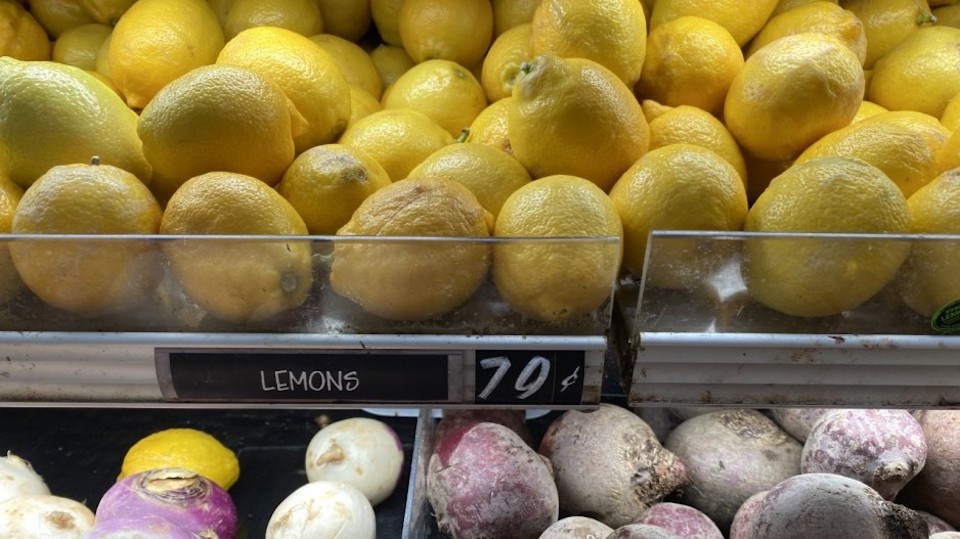B.C. grocers are vying to retain shoppers in a heightened competitive environment as food inflation soars and customers become more wary of prices.
Toronto-based Loblaw Cos. Ltd. (TSX:L) on Oct. 17 created a buzz in the market by announcing a price freeze until Jan. 31, 2023, on its house brand No Name’s products, which it sells in B.C. at its Loblaws, Real Canadian Superstore, No Frills, T&T and Shoppers Drug Mart stores.
The more than 1,500 No Name products include everything from paper towels to rice to potatoes.
The large B.C.-based grocer Save-On-Foods earlier this year implemented a price-freeze program it calls Darrell’s Price Lock Promise.
That initiative's price freezes are in effect for at least four weeks at a time, and have been on hundreds of products labelled with the company’s Western Family brand, as well as other products that are made by separate suppliers, Save-On-Foods president Darrell Jones told BIV.
One new initiative to lower prices at Save-On-Foods is to consolidate buying with other Jim Pattison Group-owned companies, such as Nesters Market, Meinhardt Fine Foods, Choices Markets, Buy-Low Foods and Quality Foods. Group wholesale buying ensures lower prices through increased economies of scale, Jones explained.
He added that Save-On-Foods is at a disadvantage, compared with national brands, because its operations are exclusively in Western Canada.
Save-On-Foods contracts producers to can products, such as corn, which are then labelled Western Family, but those producers often first prioritize national grocers that have larger orders.
“It's more difficult to have as many house brands, or lower brands, as Loblaw is talking about, because the product supply lines are far more difficult to get those products,” Jones explained.
An additional challenge for Western Canadian grocers is that many products are made in Ontario and Quebec and have to be trucked to B.C.
High gasoline prices mean considerably higher transportation costs, Jones said. Inflation in B.C. has been higher than it has been across Canada in each of the past few months, and was 7.7 per cent in September, Statistics Canada announced this morning. That is up from 7.3 per cent in August.
The other large B.C. grocer, Georgia Main Food Group Ltd., did not respond to BIV’s request for an interview by press time. Georgia Main was formerly known as H.Y. Louie Co. Ltd., and it operates the IGA Marketplace and Fresh St. Market brands in the province.
London Drugs, which is owned by the same family as Georgia Main – the Louie family – similarly did not respond to questions about whether price freezes could be put in place.
Stong’s Market CEO Brian Bradley told BIV that there is little that his two-store grocer can do to compete with Loblaw’s move to freeze its house brand’s prices.
“We don’t really have house brands,” Bradley said. “Part of our problem is that, as a small independent, we don't have the leverage with suppliers to ask for price freezes like a company like Loblaw does.”
Jones revealed that Save-On-Foods is profitable but that its profit margins have shrunk.
“We're doing whatever it takes for us to be competitive in the B.C. market, and our margins are down from what they were last year, and traditionally,” he said.
As a privately run company, Save-On-Foods does not reveal its exact profit margins.
Dalhousie University’s Agri-Food Analytics Lab research compared year-end profit margins at three large Canadian grocers: Loblaw, Metro and Empire Co., which owns Sobeys.
Its findings were that grocers were making higher profits because inflation translated into higher revenue.
It also found what it called “relatively consistent” profit margins.
BIV calculated Loblaw’s net profit margin at 3.71 per cent at the end of 2021. Loblaw’s most recent earnings report and it noted that in the 12 weeks that ended June 18, the company’s net profit margin declined to 3.33 per cent from 3.47 per cent in the same 12 weeks in 2021.
Loblaw generated $428 million in net profit in those 12 weeks on $12.847 billion in sales. That is down from $434 million in net profit in the same 12 weeks last year, on $12.491 billion in sales.




